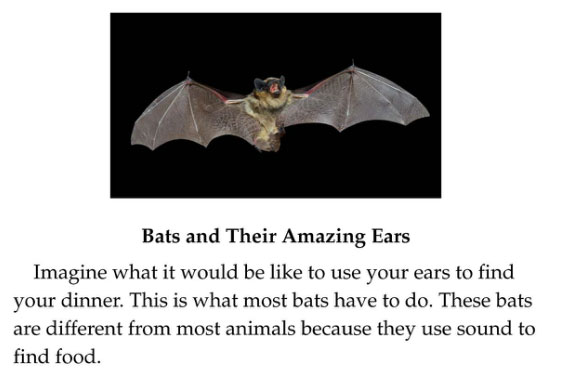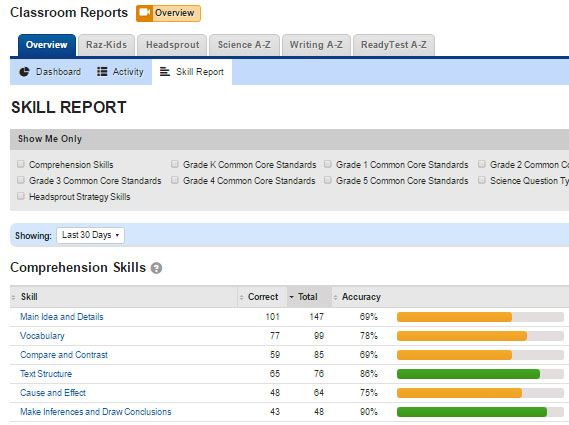Reading comprehension is one of the building blocks to college and career readiness, and a blended learning approach can help engage students in mastering this lifelong skill. Our latest product, Raz-Plus, is designed to support a blended approach to literacy instruction. With Raz-Plus Comprehension Skill Packs, digital and printable leveled books, and data-driven reporting, you can use an “I do, we do, you do” strategy for teaching comprehension skills.
Learning A-Z wants to help you implement blended learning into your classroom. Here is an example of how you can teach one comprehension skill, cause and effect, in a third grade class through a blended learning approach.
|
|
Teacher-led Instruction |
|---|
Comprehension Skill Packs provide strategies for meaningful student engagement with a variety of leveled texts. To begin a lesson on cause and effect, ask students to consider what might happen if they woke up late for school. Students could mention missing the bus or being late to class. After discussing more examples, tell students to pay attention to the words "because," "so," and "since" when identifying cause and effect.
In the "I do" portion of your lesson, identify cause and effect with a corresponding Raz-Plus nonfiction model passage, such as "Bats and Their Amazing Ears." Projectable tools allow you to read out loud while highlighting or underlining words in the text that indicate various causes and effects. As you annotate, ask students to state one of the causes in the text and the effect it creates, such as: "Since the echoes show where things are, bats do not fly into things."

|
|
Small Group Activities |
|---|
With the flexible possibilities of blended learning, you can follow up large-group instruction with a “we do” section of the lesson where small groups read a practice passage, such as "A Better Running Shoe" in a print or digital format. Students take turns reading out loud and identifying clue words that indicate cause and effect. Remind students to ask "What happened?" to find an effect, and "Why did it happen?" to find a cause.
After small groups finish collaborating, reconvene the large class to discuss what cause and effect examples they could find.
|
|
Independent Practice and Reporting |
|---|
To complete the "you do" part of the lesson and reinforce students' understandings of cause and effect, assign them a leveled eBook to read at home. By typing "cause and effect" into the Resources search bar, you can find over 300 different leveled eBooks related to cause and effect. After you've chosen the right texts, you can automatically assign eBooks to the whole class or to individual students. eBooks also feature tools for annotation and highlighting, so students can follow your in-class model for identifying examples of cause and effect.
After reading, students complete an online comprehension quiz and you can view scores in their individual Skill Reports. In order to plan future instruction, you can view Classroom Reports for cause and effect to see what percentage of students have mastered identifying cause and effect.


Raz-Plus has resources for sixteen key comprehension skills, so you can include these blended learning elements in other skill-based lessons. A blended learning approach that includes projectable passages, with tools for annotating and highlighting, help you model active reading strategies that students practice independently to strengthen their comprehension skills.


